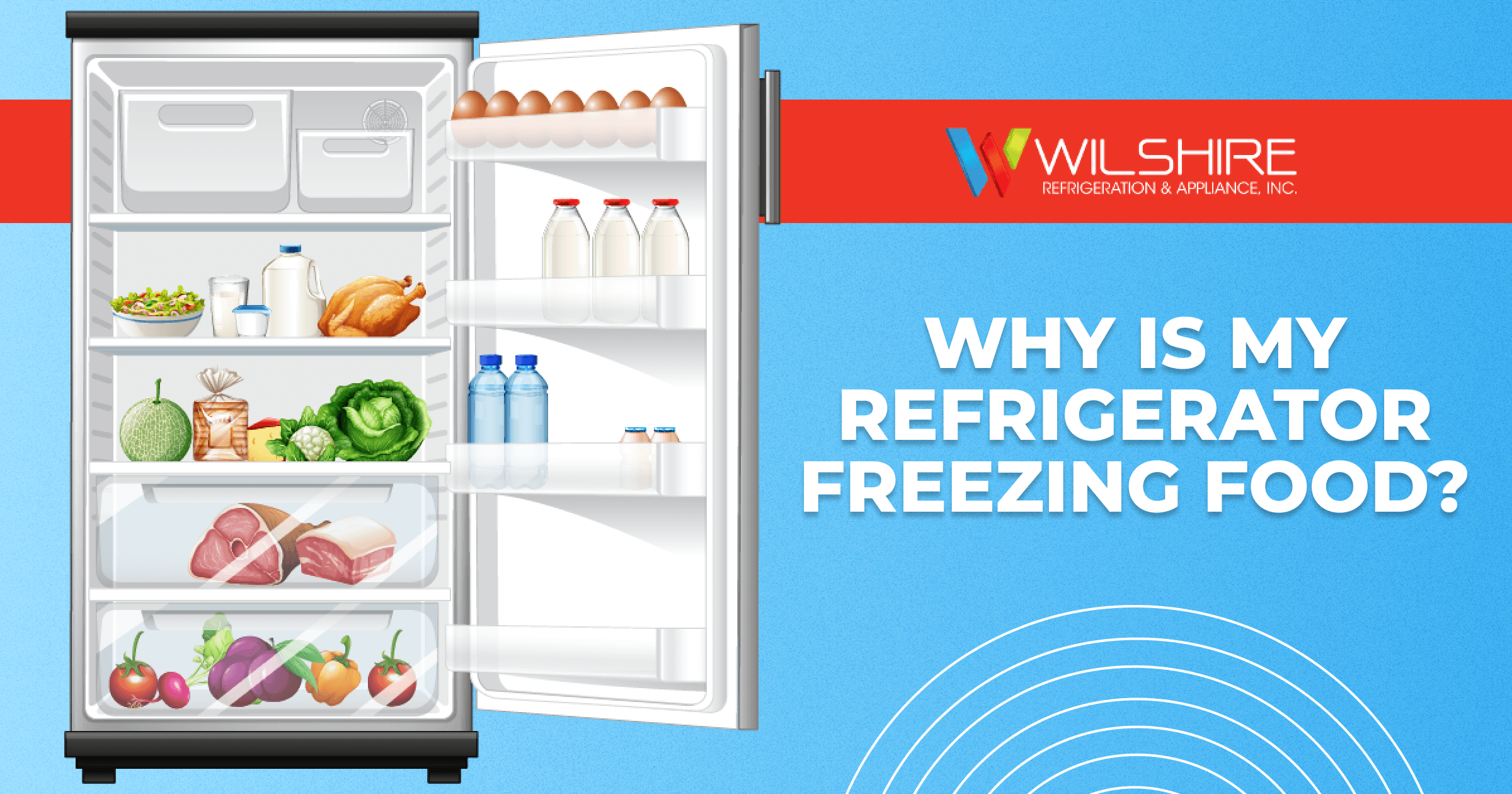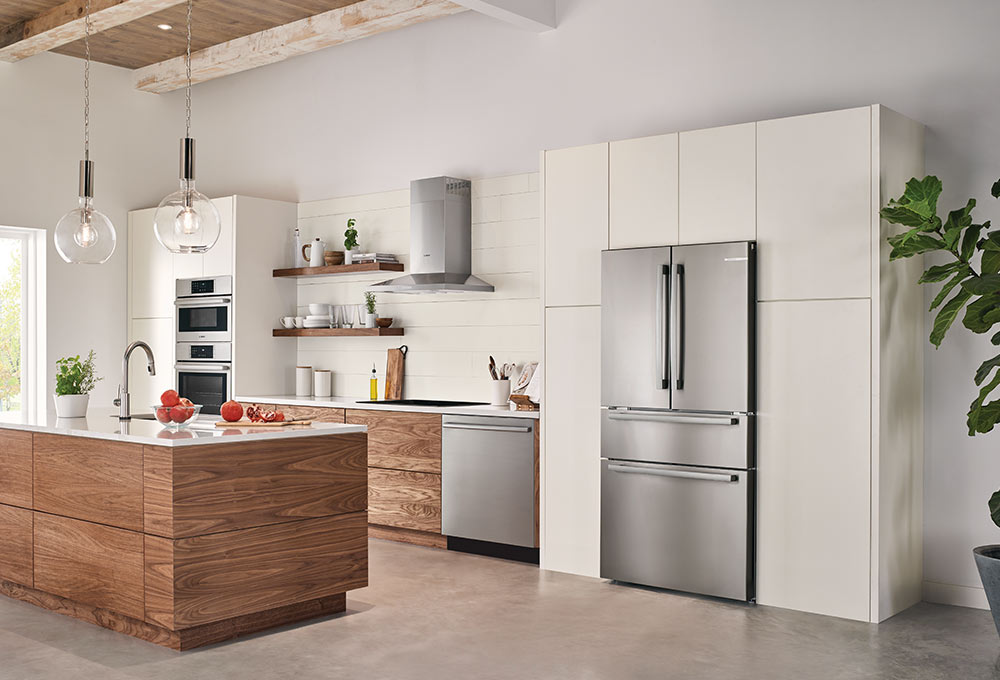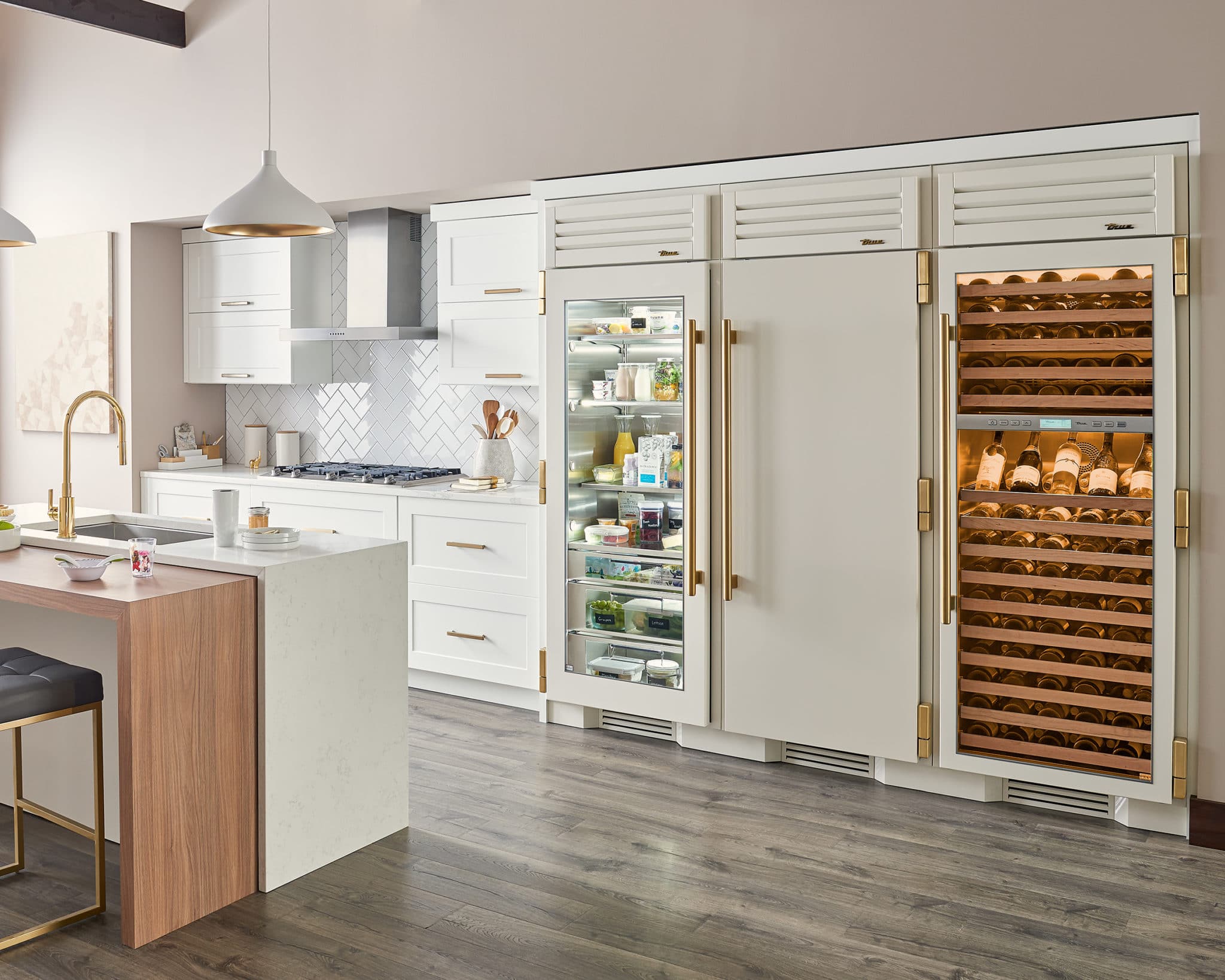Whether you have a frost-free refrigerator or not, it can develop problems that lead to undesirable results. A refrigerator freezing food is inconvenient and can indicate the unit is improperly set or needs to be repaired. No matter the reason, it needs to be addressed immediately.
Everyone who has a refrigerator has experienced this issue at one time or another. One morning, containers of water, milk, vegetables, and fruits are frozen solid. There are several reasons this may happen. Here, we’ll run through the most common causes and the steps you can take to remedy them.
8 Possible Reasons Your Fridge is Freezing Food
1. The Temperature Is Set Incorrectly
Perhaps when you were last loading groceries or removing an item, you accidentally brushed against the thermostat. This happens more easily than you think. If the temperature was inadvertently set colder, items may freeze. The mark on the adjustment knob may have worn away so you could have set the temperature differently than you intended.
This issue is among the easiest to resolve because you can simply reset the thermostat. The ideal temperature to keep food fresh, yet unfrozen, is around 36℉ to 38℉.
2. Faulty Temperature Sensor
If the setting of your fridge is ideal for cooling foods, but they’re freezing, there could be a faulty sensor. You can check the unit’s temperature manually if you suspect this problem. To do so, fill up a glass of water and place it on the top shelf. Leave it for 24 hours and then place a cooking thermometer in the water to test its temperature. If the reading is outside 2℉ of the set temperature, the temperature sensor may need replacement.
3. An Air Vent Is Blocked
Air vents help circulate the cold air in refrigerators. They also ensure the temperature inside is consistent. If food is blocking a vent, it can prevent air from reaching other parts of the unit, while direct exposure to the cold air source can result in a refrigerator freezing food.
Fortunately, this issue can be resolved by moving and rearranging food so that air vents aren’t blocked. Make sure nothing is touching the vents. Also, redistribute food so that it’s placed more evenly throughout the interior space. Or, if your fridge is overloaded, remove some items to improve airflow.
4. Leaky Seal/Gasket
The doors for your refrigerator and freezer are designed with an airtight seal. But gaskets can break down over time and leak. If a seal starts to leak, the unit can potentially become too cold as it works to compensate.
Door seals should be periodically inspected and cleaned. If they look worn out, warped, or torn, replace them right away. Otherwise, you may be wasting energy. The appliance will also run constantly, which can wear it out to the point premature replacement is necessary.
5. Faulty Damper
A damper is an assembly that regulates how much cool air reaches the refrigerator from an integrated freezer. If it malfunctions, too much air can flow into the refrigerator compartment. The temperature then gets colder to the point that food can freeze.
You can check the damper by looking near the top of a side-by-side fridge, or in the middle of a top-mount unit. It may look like a flapper door or slide gate. If it seems stuck open, the damper is defective or a control sensor has failed or become disconnected.
6. Dirty Coils
Refrigerators have condenser coils mounted on the outside and evaporator coils inside. The refrigerant passes through these coils for the purpose of heat exchange. If the coils become dusty or dirty, the refrigerator must compensate for the temperature differential and can over-cool. Rather than dealing with frozen food, you can clean the coils according to the instructions in the owner’s manual.
7. Defective Control Board
Control board failure is less common than other problems with the same symptoms. If the temperature control board isn’t working right, it can send a constant signal to the compressor or fan motors, causing the refrigerator to become too cold. Only replace the control board if checking or fixing other potentially faulty components haven’t fixed the problem.
8. Disconnected Ice Maker
If the ice maker is disconnected from the water supply but left on, it can cause the refrigerator compartment to cool to below freezing. The component is still trying to make ice. But instead, it is causing your food to freeze. You can resolve this by turning the ice maker off, if not using it, via the on/off switch, metal feeler arm, or touchscreen menu.
Schedule Factory-Certified Service Today
Based in Northridge, Wilshire Refrigeration & Appliance can make any repair to a Sub-Zero refrigerator. We serve clients across Southern California and Las Vegas. To request your appointment and receive prompt repairs to a refrigerator freezing food and other issues, request service on the web or call 800-427-3653.




